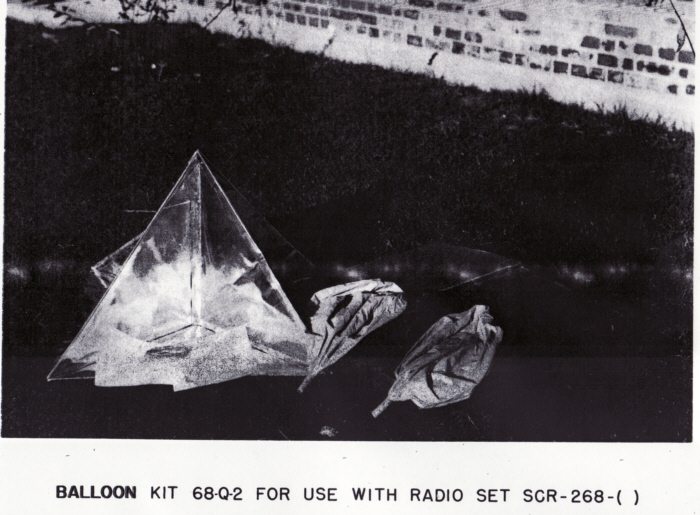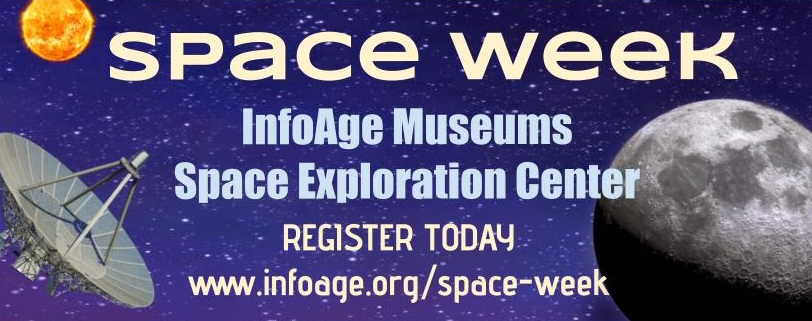The History of InfoAge Science & History Museums
![]()
CESL S E C R E T August 1943 410 RADAR FOR SEARCHLIGHT AND AA FIRE CONTROL.
| 1-410 |
IMPROVEMENTS TO EXISTING EQUIPMENT. AUTHORIZATION: 1st Ind. from OCSigO to SCGSA dated 12 June 43, file SPSRD 400.12 R&D Prog.DESCRIPTION: This project covers the improvement and refinement of equipment classified as “Radar for Searchlight and AA Fire Control.” RADIO SET SCR-268, SCR-268-A, SCR-268-B and SCR-268-C. DESCRIPTION: A mobile 205-mc aircraft detector and tracker. Determines azimuth, MILITARY CHARACTERISTICS: Recommended by SCTC Meeting No. 162, 9 Aug. 37. Progress: 1. 205-Cycle Keying Adaptor. a. Field tests are continuing on prototype models for reduction of the keying repetition rate of Radio Set SCR-268 to 205 cycles. At the present time these tests are limited 2. Skip-Keying. a. The preparation of manufacturers’ drawings and field instructions for the 1/3 skip keying unit is continuing. 3. Data Corrector. a. The Sperry Gyroscope data corrector for Radio Set SCR-268 has been turned over to the Engineering Branch for further testing. b. Sperry Data Error Corrector–Altitude Data Corrector (SCR-268) has been received at this Laboratory and is undergoing tests. 4. Automatic Data Transmission (Datamat) – SCR-268. a. Further investigations are under consideration to determine whether slant range and altitude can also be transmitted on the same telephone line simultaneously with azimuth data. 5. Combined Remote Range Converter and Remote Data Plotter (SCR-268). a. Shop construction of the Combined Remote Range Converter and Data Plotter is proceeding satisfactorily, and operational tests are planned about the first of October 1943. |
-20-
S E C R E T

| 1-410 |
(Contd.)G. Data Printer. a. A representative of this Laboratory visited the RCA at Camden, N. J., to observe and inspect a data printer for use with Radio Set SCR-268. A satisfactory demonstration of the performance of the unit was made. It is expected. that the unit will be shipped to this Laboratory for test in the near future. 7. Mechanical Lobe Switcher. a. Tests have been completed by Bell Telephone Laboratories on the advisability of using a mechanical lobe switcher for Radio Set SCR-208 metal antennas. These tests indicate that 8. Metal Antenna. a. The new antenna presently supplied with Radio Set SCR-268-( ), enables the set to provide accurate altitude data at angles of elevation as low as 8°. The metal antenna is used because of the extremely low angles of elevation normally used in early warning work, and difficulties encountered in effecting the extensive mechanical alterations necessary to provide altitude and horizontal range data as a field modi-fication. At very low elevation angles, horizontal range is almost equal to the slant range, and data on the latter is available at the range converter. All range units furnished with the Radio Sets SCR-516-C and SCR-516-E were converted to and calibrated for 1367 cps operation and are designated BC-436-C. b. A model adaptor plate and shelf has been constructed and drawings are now in preparation for the procurement of adjustable counterweight conversion kits for metal antennas. c. A series of patterns has been obtained on the British SLC Yagi Antenna with a view of adapting that type of antenna for a lightweight antenna system for Radio Sets SCR-268-( ). Theoretical calculations are in progress to determine what resultant antenna pattern could be obtained from a combination of such antennas. 9. Lighter Weight Radio Set SCR-268-T8. a. An illustrated booklet showing Radio Set SCR-268 as modified by the proposed transmitter kit has been submitted for approval. This modification will reduce the number of vehicles from five to two. b. Work is continuing on the repackaging of the complete Radio Set SCR-268-C to a Radio Set SCR-268-T8. A performance test on the main power unit of Radio Set SCR-268-T8 is in |
S E C R E T
CESL S E C R E T August 1943
| 1-410 |
(Contd.)progress at the Hobart Bros. Plant, Troy, Ohio. c. A triggered spark gap for use in the lightweight trans-mitter-modulator system has been on life test for 310 hours without any adjustment. During this time, the jitter has been less than .1 of a microsecond, for a 5 microsecond, half megawatt pulse for operating voltages within X105`0 of the normal operating voltages between anode and cathode. This gap has an improved triggered electrode which Is much easier to duplicate and no trouble has been found in routine construction of the triggered gap from blueprints. d. Mechanical layout of the transmitter is under design. Mechanical details of the spark gap have been designed and are now awaiting shop facilities. e. Further work has been done toward determining the type of transmitter to be used., as follows:-
f. Design and construction work on the adaptation of the 205 cycle keying adaptor for use with the new lightweight transmitter modulator of the Radio Set SCR-268-T8 is in progress. This unit will make possible the selection of the following ranges:
10. Eight Tube Transmitter Kit (SCR-268). a. Six kits have been made up for the conversion of the the Radio Set SCR-2G8-T8 transmitter from a 16 tube unit to one using only 8 tubes. It has been found that half the peak |
S E C R E T
CESL S E C R E T August 1943
| 1-410 |
(Contd.)power is obtained when half the number of transmitting tubes are used. The kit is extremely simple and easy to install.11. General. a. This Laboratory concurs in the recommendation that the location of Radio Set SCR-268 -B at the Florida Field Station, Clermont, Florida, would be useful for demonstration and testing purposes. b. A fungus inhibition test on canvas impregnated with copper naphthenate was made for use on Radio Set SCR-268. A sample using the Dow Chemical Company test method was tested and the results showed fungus inhibition. c. A site in California has been selected for the re-sumption of the tests with a Radio Set SCR-268 mofified for desert warfare. d. A new kit for moisture proofing all Radio Sets SCR-268-B has been prepared. This kit, bearing the type Number 268-Q5, contains sufficient material for the treatment of three Radio Sets and is to be issued to the field on the same basis as Maintenance Equipment ME-108. |
Page created August 6, 1999
We Need Your Help! Volunteer with Us.
Join our mission to preserve historic Camp Evans and teach the public about science and history.
Sign up to join our team of volunteers and start on your own mission today.
InfoAge Science & History Museums
2201 Marconi Road
Wall, NJ 07719
Tel: 732-280-3000
info@infoage.org
webmaster@infoage.org


